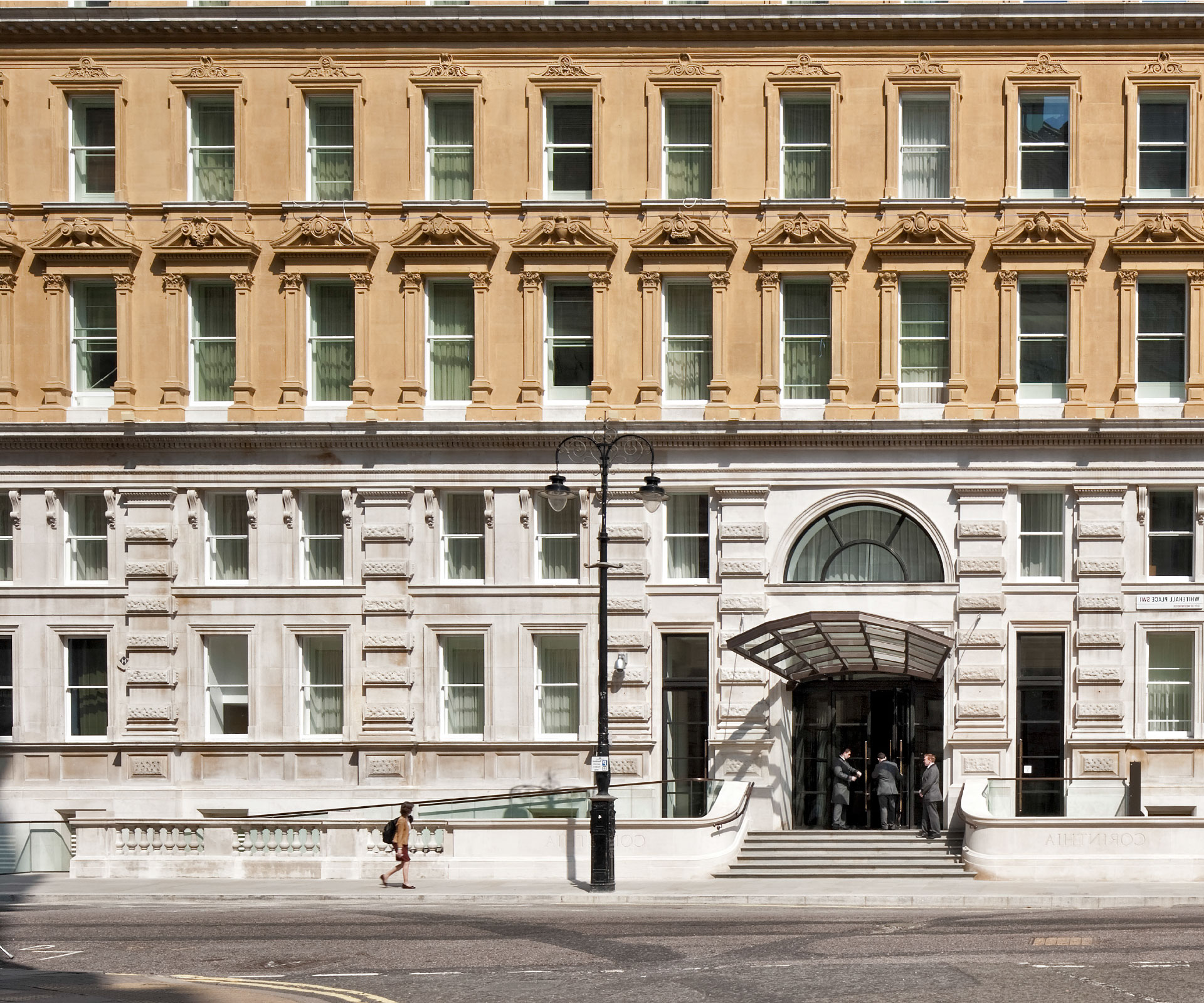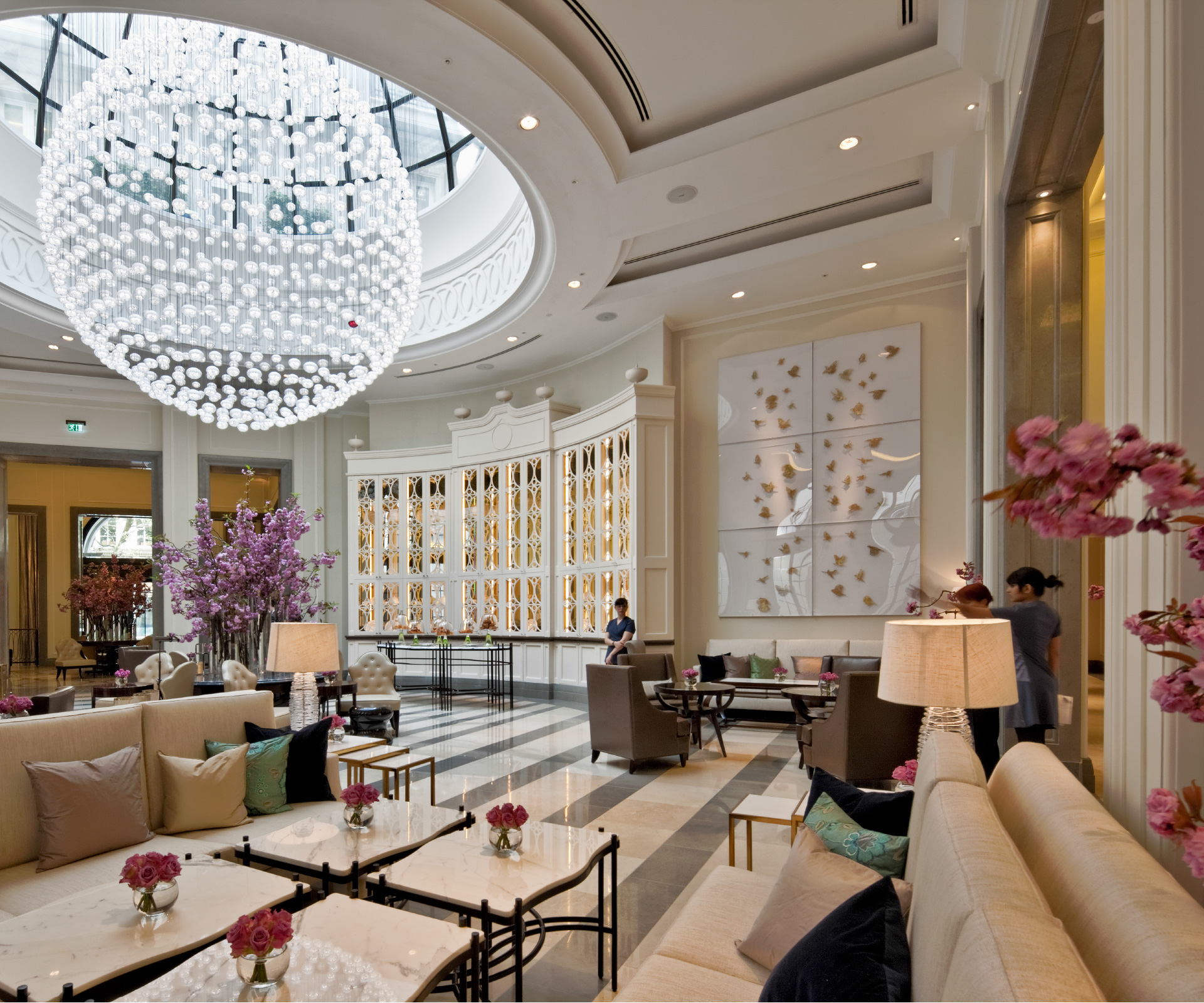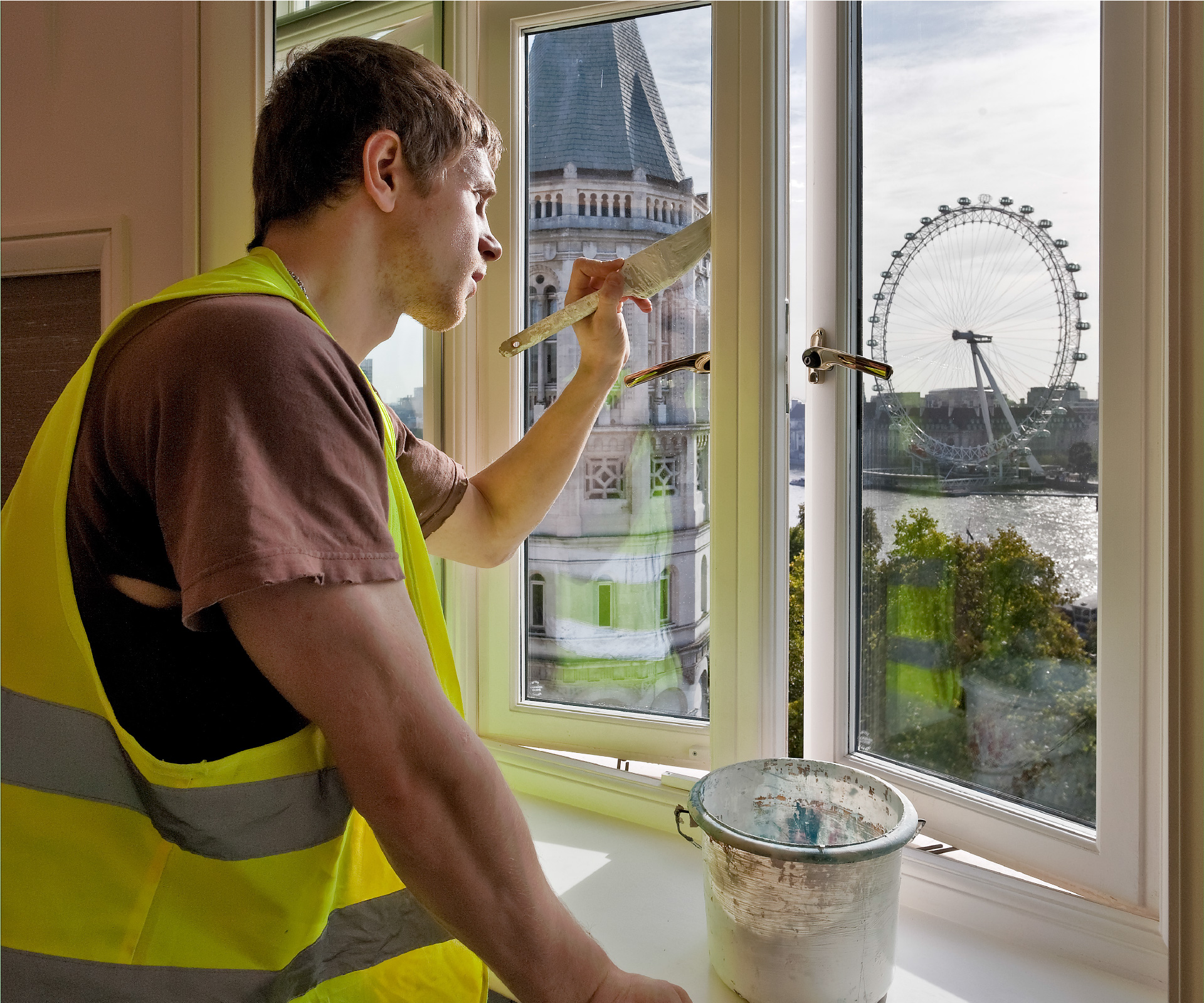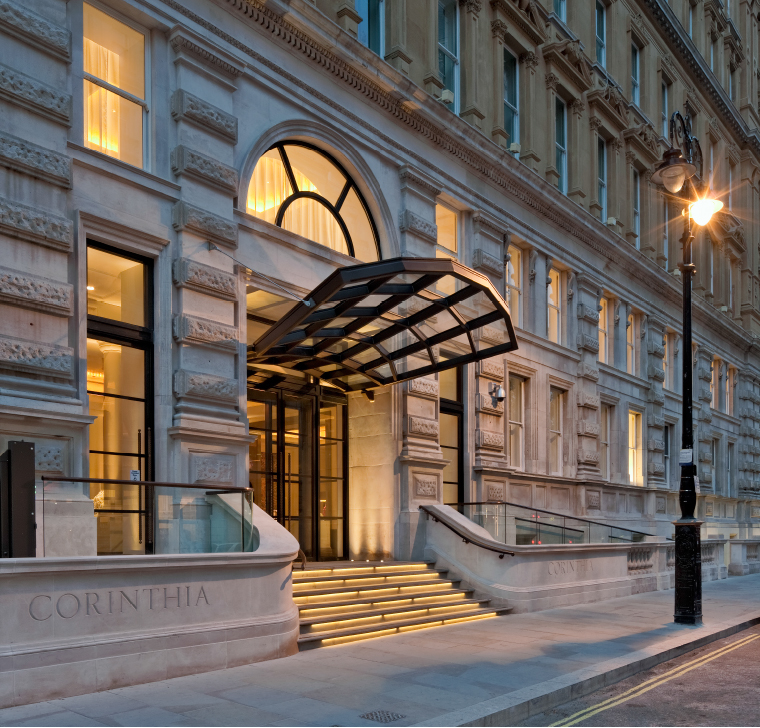
Corinthia London
In May 2011 Corinthia London opened its doors as one of London’s most luxurious new hotels following an extensive renovation that comprehensively transformed this historic site. Delivered in just two years, Ardmore was responsible for everything from excavation and structural alterations through to a full turnkey fit-out.
The property, which had been empty since 2004, now sits proudly as a grand 306 room hotel, which includes the largest hotel room in London, a four storey spa, grand marble entrance and glass domed reception area, all finished to the highest standards.
We had up to 1,000 staff on site, 24-hours a day to reduce the completion time of the project. At times the Corinthia was the UK’s largest construction project outside of the Olympics.
Â

On time & on budget
Restoring the external stonework to its original splendor was a key element in reviving the hotel to its former glory. Every inch of the stone façade of the building was cleaned, with defects meticulously repaired and window surrounds remodelled in keeping with the original designs.
Internally, a vast amount of marble has been used, from the flooring in the lobby, to the unit tops in the guest bathrooms. We sourced the stone directly from quarries in Portugal and Italy, before shipping the stone slabs to our own workshops in London where our skilled workmen could cut, shape and craft the stone, before it was laid and joined in the hotel.
Every element of joinery in the hotel has also been hand crafted in-house by our carpenters, from every door and window to the bookshelves and the bedroom cupboards to the extensive decorative timber panelling that runs throughout the property. In all we created over 10,000 individual pieces for the hotel.

And built by craftsmen
Due to the age and location of the existing buildings, conversion of this dated property involved considerable structural reconfiguration and adaptation. The desire to create vibrant spaces and large guestrooms also led to the need for significant changes to the arrangement of internal supports.
As well as instigating changes to the internal layout within the original building, considerable extension was needed in order to meet the exacting needs of a modern luxury hotel. We created an entirely new eighth floor above the original roof. Overlooking the Thames the entire floor is given over to the two-storey Royal Suite, a 470 square meter space with a wraparound terrace, dedicated lift, two bedrooms, spa, gym and wine cellar.
As much of the existing structure was formed by masonry careful consideration was required to address the extensive changes being made to the internal configuration of the building. The introduction of 3,000 tonnes of structural steel enabled many of the previous masonry dividing walls to be removed, opening up the ground floor spaces to allow a continuous flow between areas.
Heritage
Originally built for the Gordon Hotels Company in 1883, the Metropole Hotel spent a number of decades as one of London’s most glamorous hotels, playing host to a glittering array of European royalty, visiting dignitaries and the celebrities of the day.
The original grand ballroom was a favourite hang-out of King Edward VII who had a private box reserved and regularly stayed in the Royal Suite.
The close proximity to the Houses of Parliament and the political hub in Whitehall saw the hotel being commandeered for use as emergency Government offices during both world wars. In the late 1940’s it was then acquired by the Crown Estate and leased to the Government on a permanent basis, providing overflow offices for the Ministry of Defence until 2004.
As part of the conversion process back to a luxury hotel, secret tunnels built during World War II to facilitate below ground access for defence ministers to Whitehall had to be securely filled in.
“I was amazed with the scale and complexity of the renovation. Some of the work has been ingenious and I could hardly believe that the entire internal structure of the building could be removed and rebuilt without removing the façade. Ardmore’s management and organisation of such was most impressive even by military standards.â€

